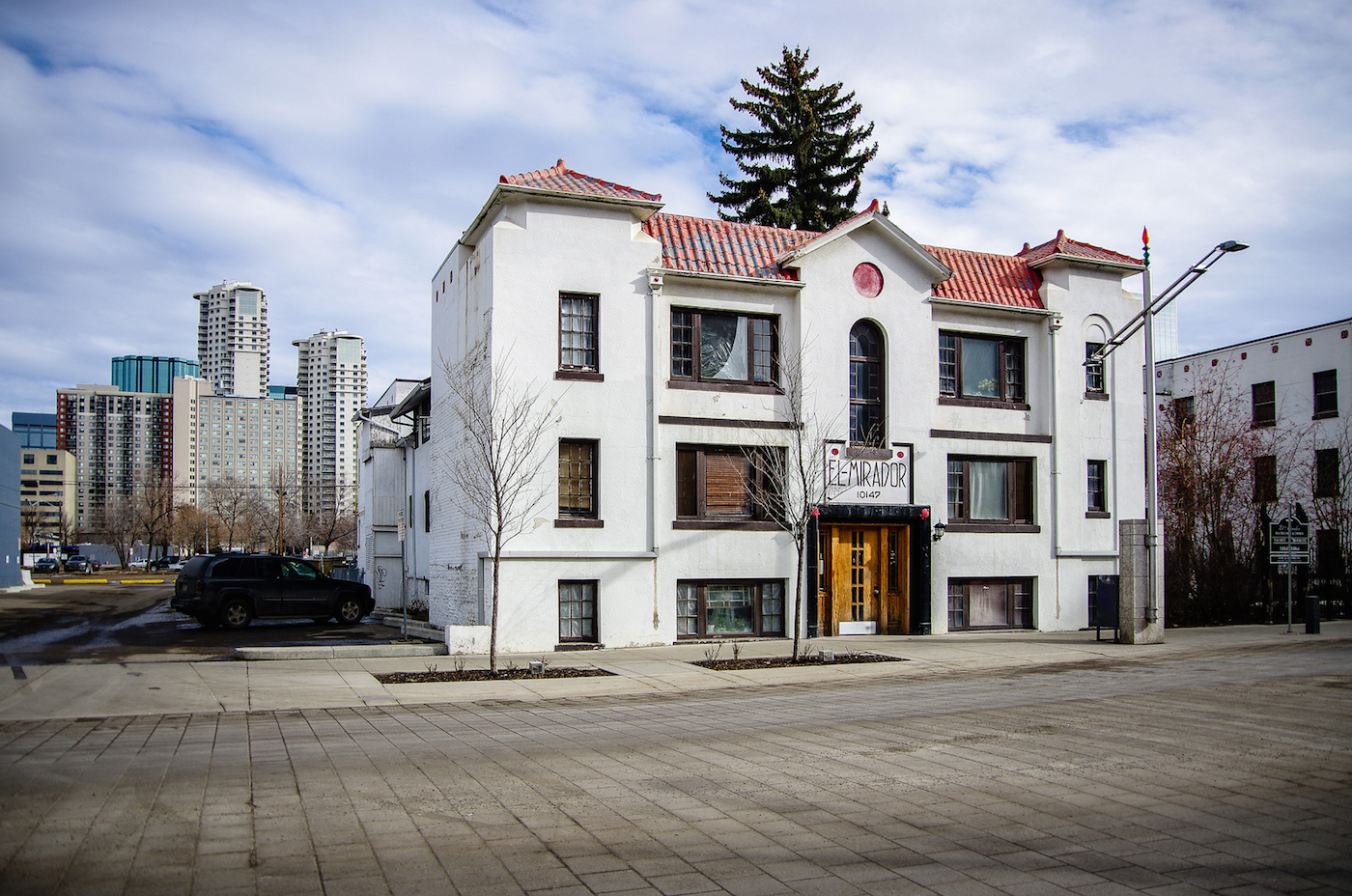National Trust Worst Losses List 2021 – Part 2
With arson and wildfires, rising land values, industrial development and housing pressures taking their toll, it is a dangerous time to be an older building or heritage landscape in Canada.
Too often, heritage places are lost with little notice beyond a flash of local media attention. What factors contributed to their destruction, and are there broader lessons to be gleaned? The National Trust’s Worst Losses List is an opportunity to capture the stories of some of these lost places before they fade from memory, and to spotlight systemic issues that hopefully spark national discussion and change.
When we started scanning for potential lost places for the list, we were sorry to discover there were plenty to choose from. In Quebec alone, an enterprising group of activists, academics and planners had quickly assembled a list this past January of 82 heritage places destroyed in the province in 2021: over 50 heritage houses, two covered bridges, as well as mills, train stations, and churches – an alarming 23 lost to arson. Here, then, are the first half-dozen sites selected for National Trust’s 2021 Worst Losses List. While by no means exhaustive, this west to east list seeks to spotlight a representative range of heritage place “types” lost this past year. Don’t miss Part 1 of the Worst Losses List in the previous issue of Locale.
Lytton Chinese History Museum (145 Main Street, Lytton, BC)
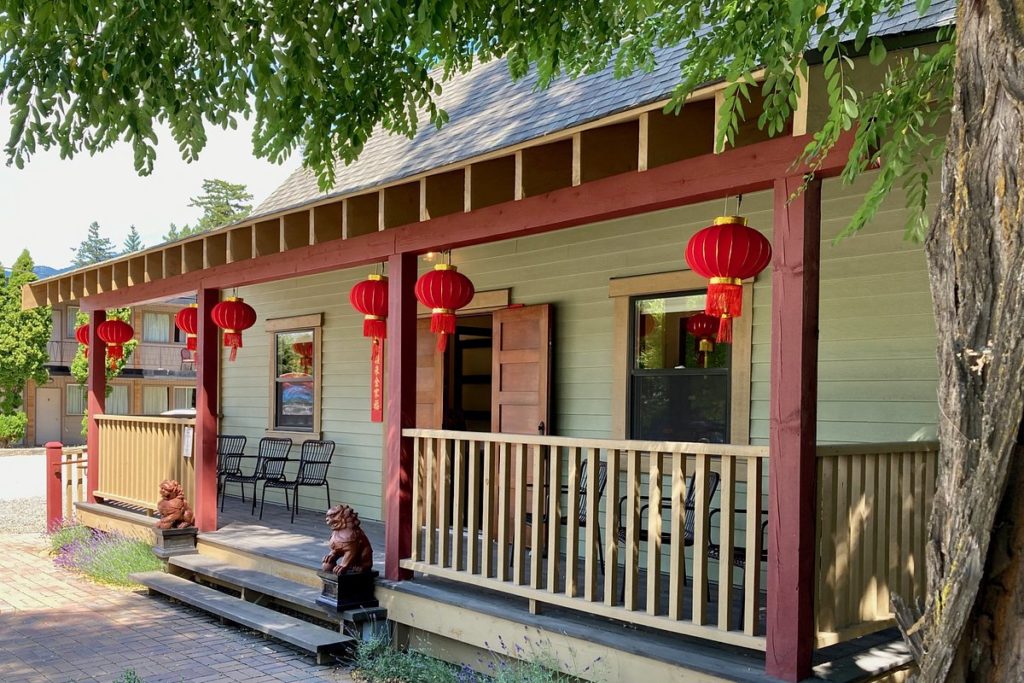
Lytton Chinese History Museum was located on a provincially designated heritage site.
Why it’s important: The Lytton Chinese History Museum contained a rich collection of artifacts showcasing the history of the Chinese community in the Fraser Canyon region of interior British Columbia. Its archive and exhibits told stories about the Fraser Canyon Gold Rush (1858-60), railway construction through the Fraser Canyon, and the cultural customs and hurdles faced by Chinese labourers from 1858 to 1928. The museum was founded in 2017 on a provincially designated heritage site that once housed the Lytton Joss House (built in 1881 and demolished 1928).
How it was lost: The museum and most of its contents were lost to the massive wildfire that swept through Lytton on June 30, 2021. With more than 1,600 fires burning nearly 8,700 square kilometres of land, the 2021 wildfire season in B.C. was the third worst on record.
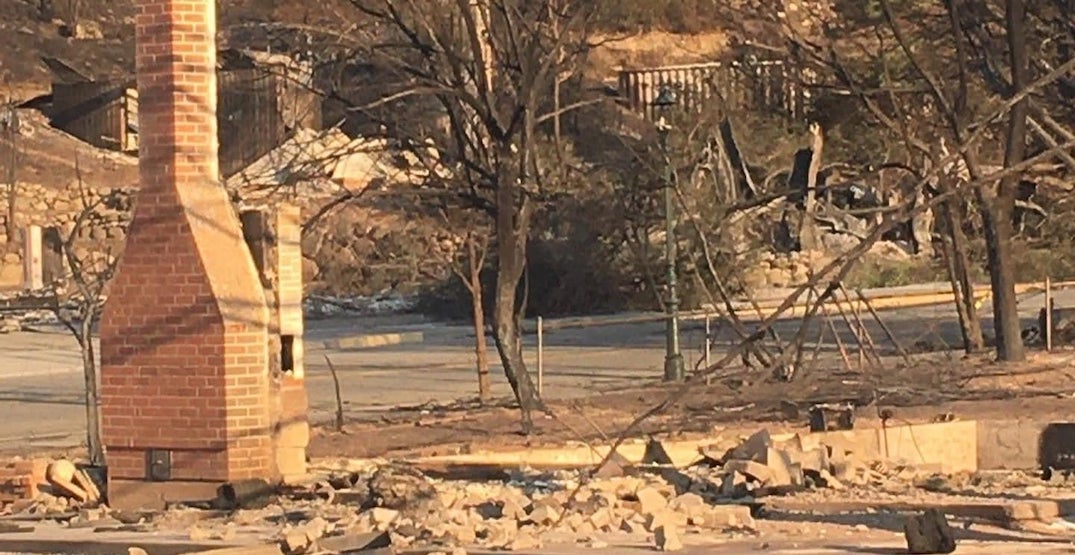
Aftermath of the fire that destroyed the museum in June 2021.
Systemic issues at play: Climate change is responsible for a rising number of extreme weather events and fires. Rapidly accelerating the reuse and retrofit of Canada’s built environment is key for climate change mitigation.
El Mirador Apartments (10133 -108 St., Edmonton, Alberta)
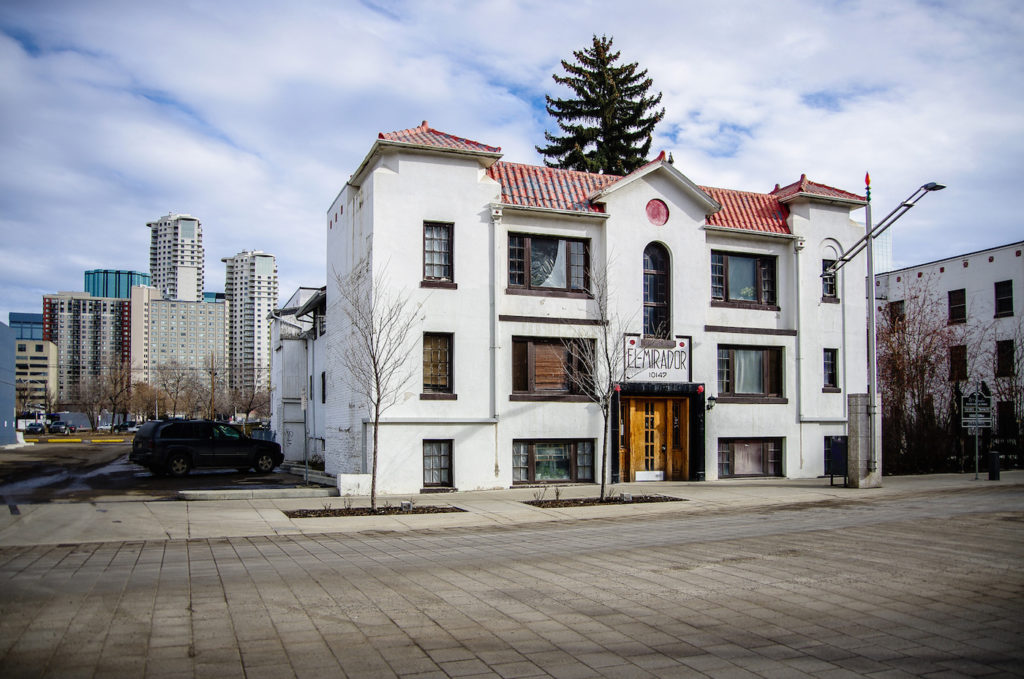
El Mirador’s unique Spanish Revival style was unlike anything else in Edmonton. Photo credit: Glen Bowe
Why it’s significant: Built in 1935, this well-known Spanish Revival style apartment building lent a unique touch of southern California architecture to downtown Edmonton. Featuring red roof tiles, arched walkways, and spiral staircases, the building’s distinctive communal courtyard was a legendary gathering space for building residents and community members, many of whom were involved in arts and culture.
How it was lost: A high-profile preservation cause célèbre in a downtown area with abundant surface parking lots, the El Mirador stood on death row for many years, threatened by the massive development potential of the land beneath it. It was bulldozed on October 20, 2021 to make way for a huge new commercial and residential development with 35 and 45 storey towers.
Systemic issues at play: Development pressure. Need for more substantial heritage incentives to compensate for lost development potential and improve the bottom line for existing buildings.
Saskatchewan Hospital North Battleford (North Battleford, SK)
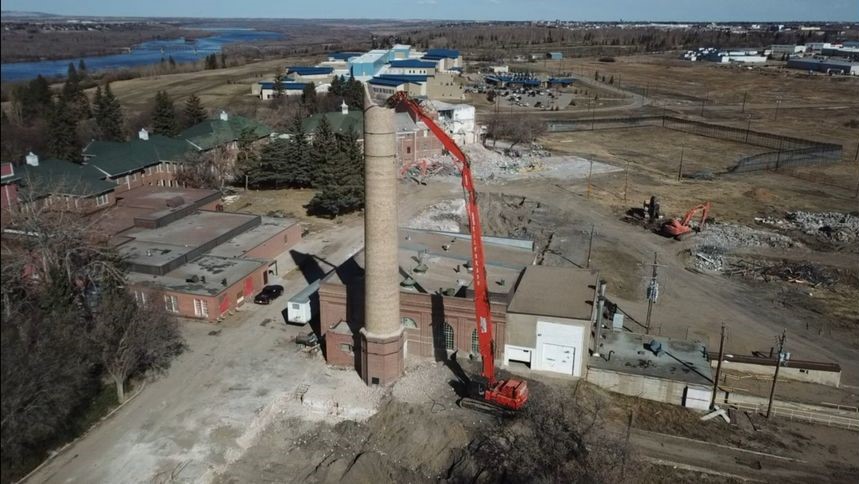
Photo credit: Silverado Demolition inc.
Why it’s significant:
Built between 1911-1913 the Saskatchewan Hospital North Battleford was the first mental health hospital in Saskatchewan, and at one point housed over 2,000 patients. Once situated on a 2,250 acre property overlooking the North Saskatchewan River, the largely brick complex centred around the vast 23,300 m2 (250,000 sq. ft) two-storey main building, as well as industrial therapy and correctional buildings, dormitory buildings, barns, a dozen cottages, greenhouses, and other structures on a picturesque wooded site.
How it was lost: A new $400 million hospital was built on an adjoining site and opened in March 2019 at which point the old hospital complex was shut down. Over a short three week period in August 2019 the Saskatchewan Government entertained proposals for reuse of the complex. When there were no bidders, it was decided to demolish the entire complex. The Battlefords North West Historical Society launched a campaign to save a portion of the main building’s façade, but failed to find funding. Demolition began in April 2021 and took several months to complete – see demolition videos here. A small number of architectural features were salvaged with plans to incorporate them into a “Legacy Walk” at the site. The only building now remaining is a modest stone chapel built by a patient with stones collected by patients from the hospital’s farm fields.
Systemic issues at play: Limited adaptive reuse capacity and short timelines. Rapidly accelerating the reuse and retrofit of Canada’s built environment is key for climate change mitigation. There is the need for more heritage incentives particularly at the federal level.
Dominion Wheel and Foundries Company (153-185 Eastern Avenue, Toronto, Ontario)
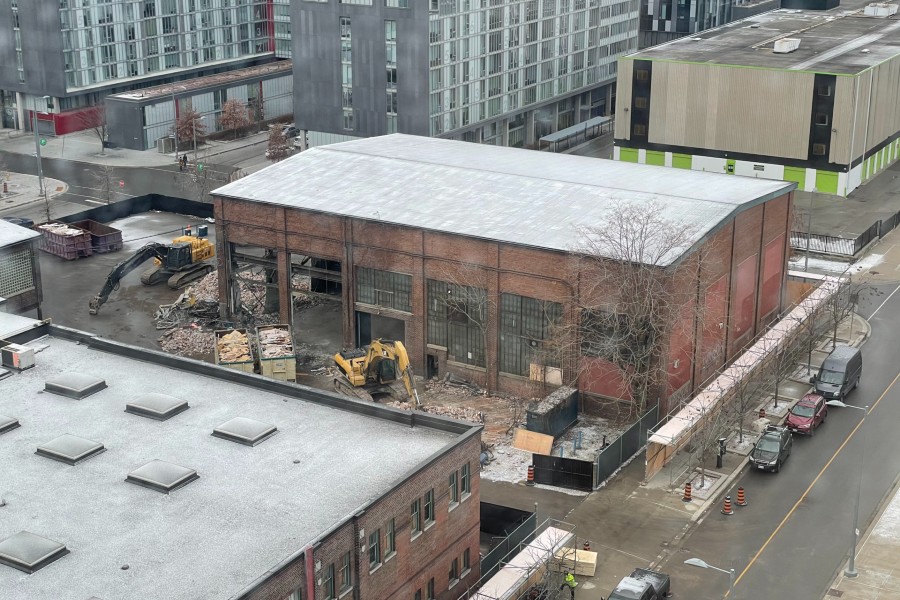
Demolition of the Dominion Foundry buildings began on January 18, 2021. Photo credit: Matthew Cornett (NOW Toronto)
Why it’s significant: The five Dominion Wheel and Foundries Company buildings were constructed by Canadian Northern Railway between 1912 and 1953. This group of industrial heritage buildings in eastern downtown Toronto’s West Don Lands were part of a much larger complex once engaged in building railway equipment, rolling stock, and machinery. The Dominion Wheel and Foundries Company buildings tell an important story of Toronto’s history as a manufacturing centre, which is slowly being lost to gentrification and unsympathetic development. In 2004, the site was added to the City of Toronto Heritage Property Register.
How it was lost: In October 2020, the Province of Ontario issued a Minister’s Zoning Order (MZO) to override the city’s current zoning for the site and make way for residential towers – including 30% affordable rental units. Unannounced, the Province commenced demolition of the five Foundry heritage buildings on January 18, 2021. After damaging several buildings, work was halted on January 21, following public demonstrations and a court injunction led by the local city councillor and a community coalition. In August 2021, prior to a scheduled court hearing, the Province and City announced an agreement whereby three buildings will be retained and two demolished in the residential redevelopment project.
Systemic issues at play: Development pressure. Rapidly accelerating the reuse and retrofit of Canada’s built environment is key for climate change mitigation.
Club Super Sexe (696 Ste.-Catherine Street W, Montreal, Quebec)
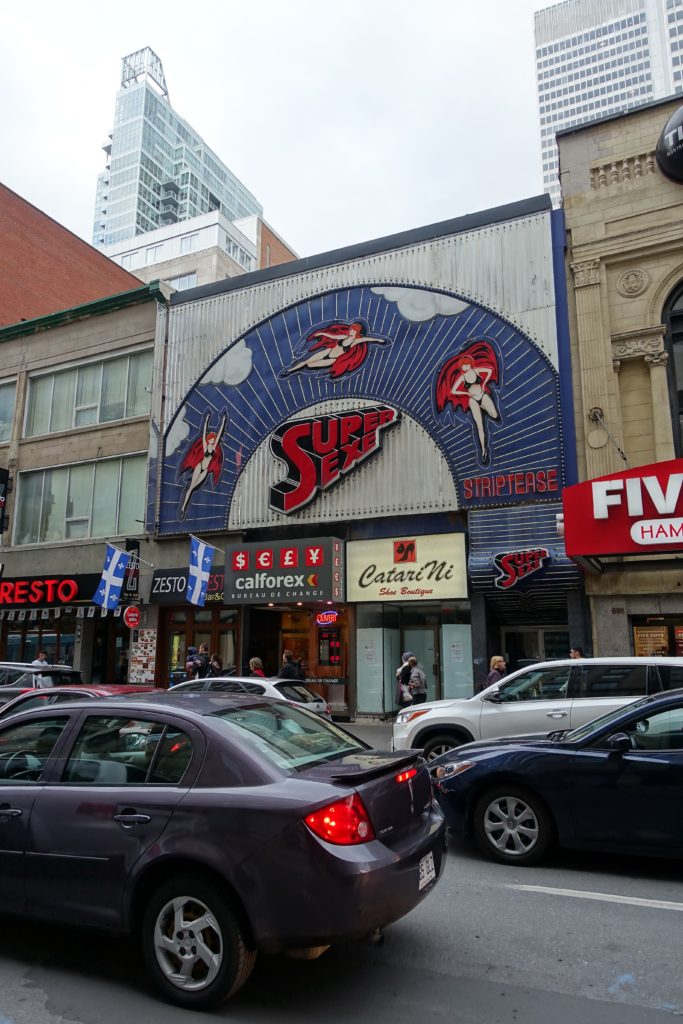
photo credit: Guilhem Vellut
Why it’s significant: Opened in 1978, Club Super Sexe and the iconic multi-storey neon sign covering its front façade was a well-known landmark on Montreal’s popular Ste.-Catherine Street, once one of North America’s most renowned red-light districts. Featuring three women in black bikinis, high heels and red superhero capes, the racy façade stood as a lingering testament to Montreal’s rich and joyfully contradictory cultural identity.
How it was lost: Super Sexe closed its doors in 2017 and sat abandoned despite rumours of revitalization plans. The infamous neon sign remained even after the club closed and plans were afoot for a new retail tenant to move in. On October 30th, the historic building was destroyed by a suspected arson that started in the vacant building next door. Unfortunately, the sign was also destroyed in the fire and its significance to Montreal’s history has been lost with it.
Systemic issues at play: Demolition by neglect, leaving the building vulnerable to arson.
Manoir Taschereau (Sainte-Marie, Quebec)
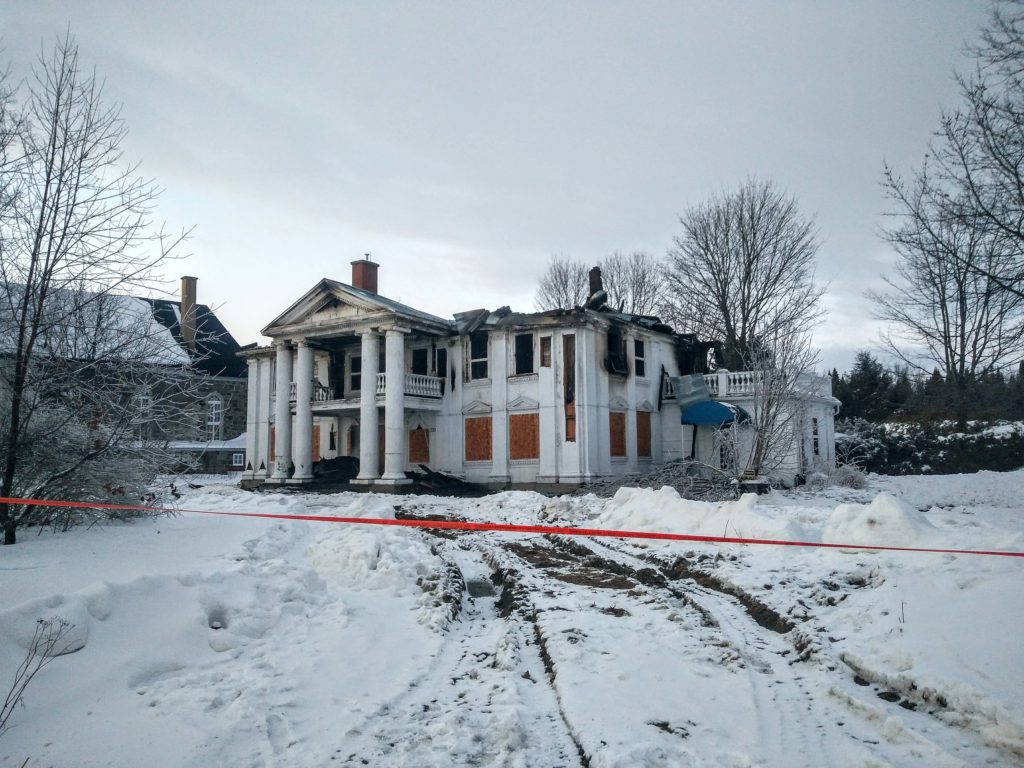
Why it’s significant: Built between 1809 and 1811 in the English Palladian style, the Manoir Taschereau was listed as a heritage property by the Province of Quebec in 1978. A grand and imposing landmark, the mansion was inhabited by many generations of Taschereau, one of the first families to settle in Beauce, and it was one of the last vestiges of the seigneurial era in the region. For many years, it functioned as a bed and breakfast.
How it was lost: Damaged by flooding in April 2019, the Manoir Taschereau sat abandoned until it was further damaged by a catastrophic arson fire in February 2021. It was subsequently deemed beyond repair and demolished against a local outcry.
Systemic issues at play: Demolition by neglect, leaving the building vulnerable to arson.
Systemic Issues: The Stories Behind the Worst Losses: Some 2021 Worst Losses, like the fire that consumed the beloved Keno Hotel, were simply tragic accidents. Most heritage places, however, were undermined by a combination of overt challenges and underlying systemic issues. Here are some notes on key issues the National Trust is working on:
- Development Pressure – The development potential of land, particularly in urban areas, now often exceeds the value of the buildings currently occupying them – a reflection of economic distortions including zoning. At the same time, Canada is the world leader in waste per capita in part because its tax and planning systems devalue existing buildings and promote their premature obsolescence. Capitalizing on the embodied carbon and natural resources in existing buildings is still not recognized as an urgent climate action by Canadian governments or the public.
- Indigenous Cultural Heritage – Current land and heritage management systems are not allowing Indigenous peoples the full cultural stewardship of their traditional territories. More work is needed to implement the United Nations Declaration on the Rights of Indigenous Peoples (UNDRIP) which Canada adopted in 2016. For instance, UNDRIP’s Article 11 states: “Indigenous peoples have the right to practise and revitalize their cultural traditions and customs. This includes the right to maintain, protect and develop the past, present and future manifestations of their cultures, such as archaeological and historical sites…”
- Demolition by Neglect – This issue is symptomatic of many factors including: disincentives to building reuse embedded in the tax, building codes, and planning systems; ineffective property maintenance bylaws; construction industry bias to new construction; lack of skilled workers/professionals who understand older buildings and can mitigate risk; and inadequate financial support (or disincentive removal) for owners seeking adaptive reuse.
- Inadequate Financial Tools for Heritage Reuse – Canada lacks powerful financial tools to enable saving and reusing heritage properties. For decades in the United States, the Federal Historic Rehabilitation Tax Credit and State-level credits have worked to counterbalance the unfair demolition/new construction economic advantage. Embodied energy/carbon measurement tools and credits are not reflected in Canada’s Carbon Pollution Pricing System. Canada also lacks a system – mirroring the Ecological Gifts Program launched in 1995 for ecologically sensitive land – to provide tax incentives for owners wanting to protect their heritage properties.

